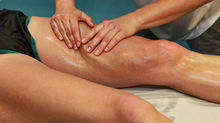What is Vertigo?
- Eliza Aggar

- Mar 9, 2023
- 3 min read
Vertigo is a symptom, rather than a condition itself.
Vertigo is a type of dizziness that is often described as feeling that you are spinning or that the world is spinning around you, particularly if you change position.
Vertigo is often caused by a dysfunction in the vestibular system from a peripheral or central lesion.
In younger patients, middle ear pathology is most often the cause.
In the elderly, specific assessment is needed due to the risk of falls and their complications.
The key to arriving at the diagnosis is to differentiate vertigo from other causes of dizziness or imbalance and to distinguish central from peripheral causes of vertigo.
What causes vertigo?
Peripheral causes (more common) include: benign paroxysmal positional vertigo BPPV and Ménière’s disease.
Central causes of vertigo are less common but should always be considered and screened for; Ischemic or haemorrhagic strokes (particularly involving the cerebellum or vertebrobasilar system) are causes that could be life-threatening.
Other central causes include: Tumors, Vestibular migraines (common central cause of vertigo) and MS (associated with both central and peripheral causes of vertigo).
Other causes that can lead to vertigo e.g. medication-induced vertigo and psychologic disorders, including mood, anxiety, and somatisation.
BPPV: Benign Paroxysmal Positional Vertigo
BPPV is the most common type of vertigo, characterised by brief vertigo episodes triggered by head position changes.
BPPV accounts for 20 to 30 percent of all patients seen for vertigo in clinics that specialise in dizziness.
Overall incidence of BPPV in the general population is around 2.5 percent, it is more common in older adults.
Some studies show that 50 percent of older adults have BPPV.
BPPV is thought to occur due to displacement of otoconia (small crystals of calcium carbonate) of the inner ear into the fluid-filled semicircular canals causing frequent transient episodes of vertigo lasting a few minutes or less.

These canals are sensitive to gravity and changes in head position can be a trigger of BPPV
There are three canals that can be affected:
- Posterior canal (most common)
- Superior (anterior)
- Horizontal (lateral)
It is estimated that 85 to 95% of BPPV occurs in the posterior canals. 5 to 15% occurs in the horizontal canals and 1 to 5% occurs in the superior canals.
Common triggers
Vertigo relating to posterior BPPV (most common) can be triggered by any action which stimulates the posterior semi-circular canal, i.e:
Tilting the head
Rolling over in bed
Looking up or under
Sudden head motion
BPPV may be made worse by any number of modifiers which may vary between individuals:
Changes in barometric pressure - patients often feel symptoms approximately two days before rain or snow
Lack of sleep (required amount of sleep may vary widely)
Stress
Symptoms
Dizziness
Nausea or imbalance with changes in head position with respect to gravity
Repeated episodes of positional vertigo, i.e. a spinning sensation caused by changes in the position of the head
How Physio can help?
There are a variety of objective testing measures used in physiotherapy that can determine why you might be experiencing vertigo.
During a physiotherapy session the physiotherapist will take a detailed history of your symptoms, your past history including any other episodes, ear conditions, any potential trauma to the head and will then start to piece together the cause of your vertigo.
Next, the physiotherapist will take you through a series of specific tests to determine if your vertigo is coming from peripheral or central causes as mentioned above and if it is BPPV causing your vertigo, these tests will then help to determine which canal is affected. This part of your assessment is important to determine the correct treatment.
Treatment
The type of vertigo you are experiencing will determine what treatment you will receive.
The most common treatment is the Epley Manoeuvre. The Epley manoeuvre is used to treat BPPV when the posterior canal is affected.
The Epley Manoeuvre uses gravity and a series of particular head positions to move crystals out of the semi-circular canal and back to the vestibular where they will no longer cause symptoms. These crystals are then thought to dissolve over time.
Following this the physiotherapist will give you specific post treatment care instructions. These may include:
Maintaining your head upright for the rest of the day
Avoid bending your head up and down and tilting your head sideways for the day
Sleep propped up with an extra pillow
Sleep on your unaffected side or semi-reclined on your back
Avoid the movements that have triggered your symptoms for a few days after treatment
Sometimes you can feel a bit off balance, nauseas or dizzy after your treatment, so it is a good idea to get someone to pick you up. Usually this will settle after a few hours, however symptoms may continue for up to 48 hours.
Often 1 treatment is enough to relieve your symptoms. However, if symptoms do persist, 2-3 treatments are recommended.
































Commentaires